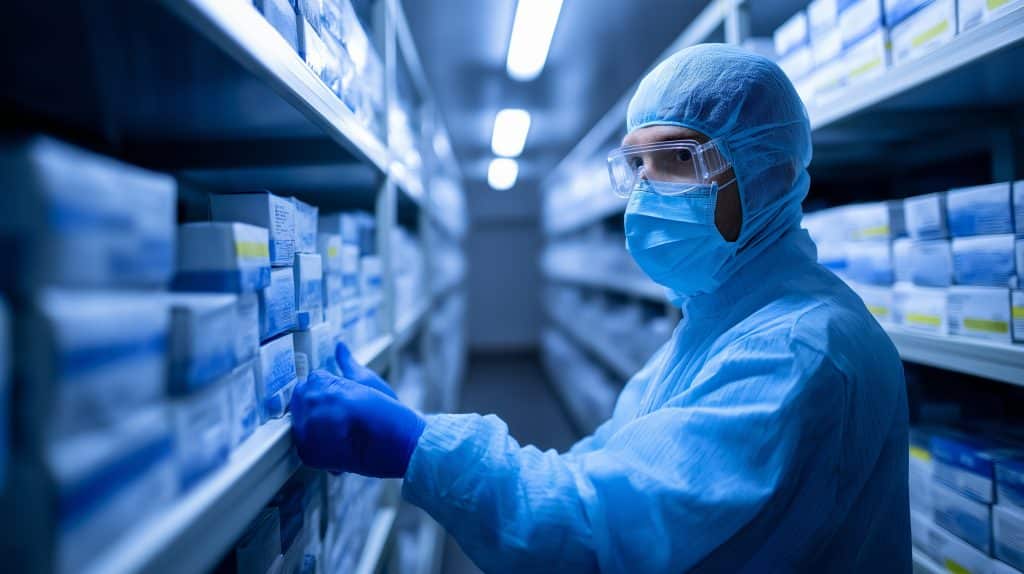Design Coordination for a Better Outcome
October 10, 2025

Most of us are familiar with the age-old expression that “the customer is always right” inspiring us to always prioritize customer satisfaction. Nowhere is this truer than in facility design consulting.
To prioritize customer satisfaction, Apogee must first work with our customers to clearly define their project needs. For the Owner-Consultant team to succeed, we must clearly understand what “success” looks like to the customer.
Many of the spaces that Apogee design are complex and critical spaces. One example of these facilities is sterile compounding pharmacies and hazardous compounding pharmacies within active medical facilities.
Compounding pharmacies in medical facilities must meet a wide range of requirements based on building codes, FGI standards, USP regulations, ASHRAE standards, Federal or State design guidelines, and any other standards set by the individual facility.
To help the customer be “right”, Apogee actively engages with our customers throughout their decision-making process as their consultant to help them make informed decisions based on several factors.
For example, suppose our hospital customer wants to add or update an inpatient compounding pharmacy. USP 797 and USP 800 set strict requirements for temperature, humidity, air change rates, and pressure differentials that MUST be met and maintained at the risk of having to invalidate any medications compounded.
As it relates to temperature and humidity, USP requires that sterile compounding cleanrooms to be maintained at a temperature of 20°C (68°F) or cooler and a relative humidity (RH) below 60%. USP also requires personnel working in the compounding areas to wear protective clothing including a sterile gown, hair covering, face mask, sterile gloves, and potentially a face shield.

To improve personal comfort and limit fatigue, the individuals working in these critical facilities seek room conditions that are much cooler than what USP requires. Temperatures of 62°F to 64°F are often sought. These desired temperatures are lower than traditional hospital HVAC equipment can provide. This leads to a detailed conversation with our customers’ leadership about requirements verses desires and the associated cost.
Similar temperature goals also apply to hospital operating rooms. Based on the laws of thermodynamics, 45°F central chilled water cannot produce a room air temperature much below 68°F at 50% relative humidity.
This is an area where Apogee can help a facility owner make an informed decision so that they can be happy with for years to come. This helps our customer make their “right” decision. We present options and implications:
Provide Room Conditions that Meet the Minimum Requirements of USP
There are no additional equipment or systems required for this option, nor does it add any additional cost to the project. However, the room conditions will not meet the preferred temperature.
Provide Separate Low-Temperature Chillers Serving the Pharmacy Space and Possibly Including Operating Rooms
For this option, the pharmacy room conditions can be controlled to meet desired temperature and humidity levels. However, this will require additional, complex equipment and piping, presenting a significant cost increase for added equipment, operating and utility costs, and added facility maintenance costs.
Operate the Campus-Wide Chilled Water Plant at Lower Chilled Water Discharge Temperatures
While this approach allows the pharmacy room temperature and humidity conditions to be reduced to near the desired conditions, it will require that the entire hospital campus to be operated at chilled water temperatures to serve the needs of a tiny fraction of the campus area. Moreover, there will be a significant loss of chiller efficiency resulting in additional energy and operational costs.
Incorporate a Dedicated Outdoor Air Handling Unit (AHU) with a Desiccant Wheel to Remove Humidity from Incoming Outside Air Before Further Cooled by the Pharmacy AHU to Desired Pharmacy Temperatures
Taking this approach will allow the pharmacy room temperature and humidity conditions to be reduced to the desired conditions, but it also will require the addition of a dedicated outside air conditioning unit and a limited about of hydronic water piping. The desiccant AHUs are moderately expensive but are generally simple pieces of equipment that require very little maintenance and would be easy to service and repair.
Utilize Heat Pipe Technology in the Pharmacy AHU Chilled Water Coil to Provide Pre-Cooling to Further Lower Humidity
For this approach, the pharmacy room temperature and humidity conditions can be reduced to the near the desired conditions. It will cause a very minimal additional cost with no added exterior piping or pumping required.
However, this option requires the addition of a minimal amount of equipment that can be factory-installed into the AHU. This will not provide a complete solution to get all of the way down to 64°F and 50% RH.
At the end of the day, the final decision must be made by the customer and not the design consultant. Only the customer can decide what solution best meets the operational and financial needs. Apogee, as the consulting partner, can provide the relevant information to enable the customer to make the decision that is “right” for them.